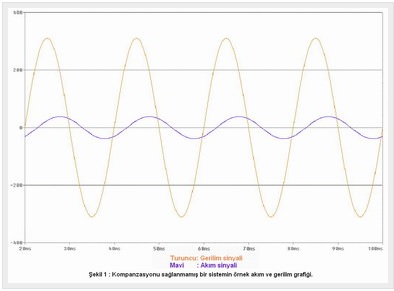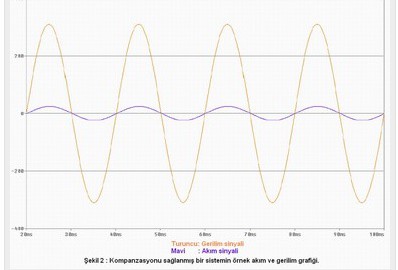
What is Compensation System?
Ideally there is no phase difference between voltage and current. As a result of the effect of inductive or capacitive loads, the current signal shifts the maximum ± 90 degrees phase relative to the voltage signal. Compensation is the process used to correct the phase shift between the voltage and current signal resulting from the inductive and capacitive effect and keep it close to the ideal (at 0 degrees).
In practice, in the electrical system, the electric motor, coil, etc., with the effect of magnetizing the electrical energy into electrical energy or a different energy devices, this magnetizing effect can be seen in Figure 1 as the phase current back to the current (inductive power) due to the network the inductive reactive power balancing they have created and the withdrawal of the current of the phase to the position it should be called is the activation. The current voltage graph of a compensated system is also shown in Figure 2.

